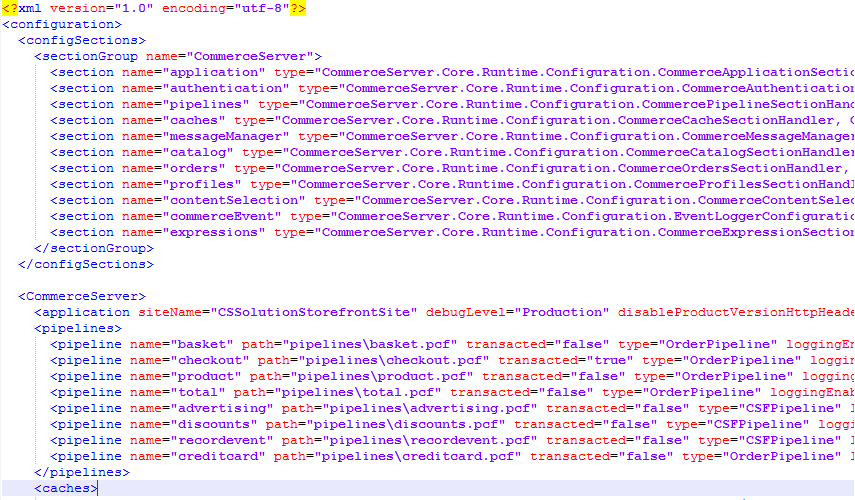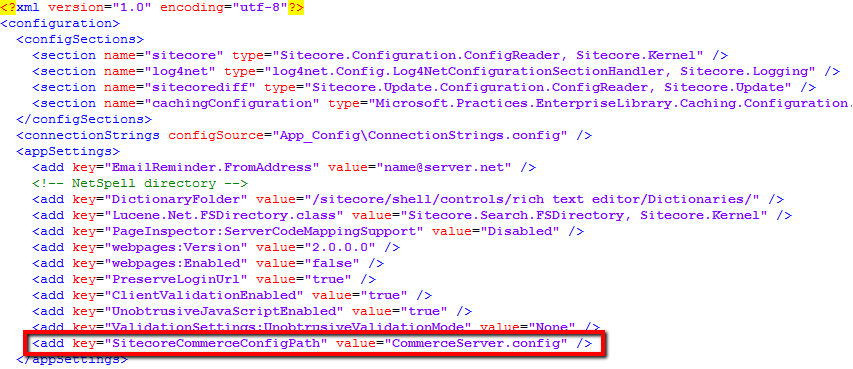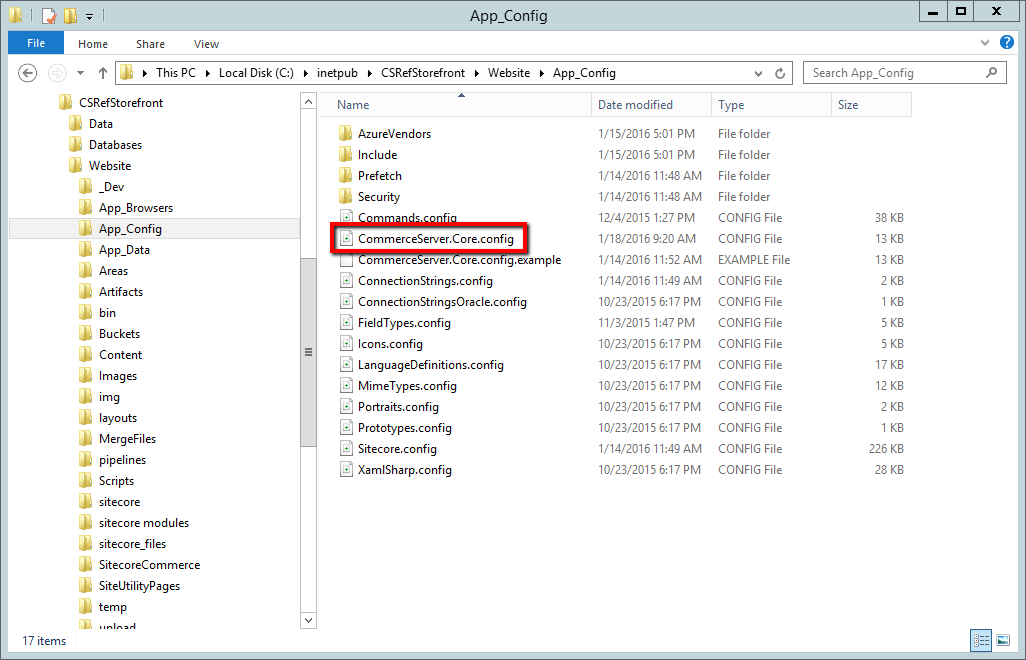Commerce Server Core configuration
You can now optionally store the entire Commerce Server configuration section in a separate file, outside of the web.config.
Previously, the only way to supply the Commerce Server Core configuration was in the web.config file. Because Sitecore does not provide a way to auto-inject entries into the web.config, and because newer versions of Sitecore require a web.config upgrade, the amount of entries required in the web.config needed to be reduced. You can now optionally store the entire Commerce Server configuration section in a separate file, outside of the web.config.
The configuration file must contain the standard CommerceServer sectionGroup definition, and the CommerceServer configuration xml. The following image provides an example:

The Commerce Server Core internals will search for the Commerce Server configuration through a three-step process:
It will check the web.config for an appSetting key called “SitecoreCommerceConfigPath”. If it finds that entry it will load that file.
If an appSetting cannot be found, it will look for a file at \App_Config\CommerceServer.Core.config.
If neither of those things can be found, then Commerce Server will return to the web.config file and search for the Commerce Server config section in the usual way.

The recommended approach is to store your Commerce Server configuration in the \App_Config\CommerceServer.Core.config file. With this approach, you can deploy your own version of the Commerce Server config in your Sitecore packages, without having to change the web.config file. SCpbCS deploys a sample config file at \App_Config\CommerceServer.Core.config.example , which you can use as a starting point for your projects.
